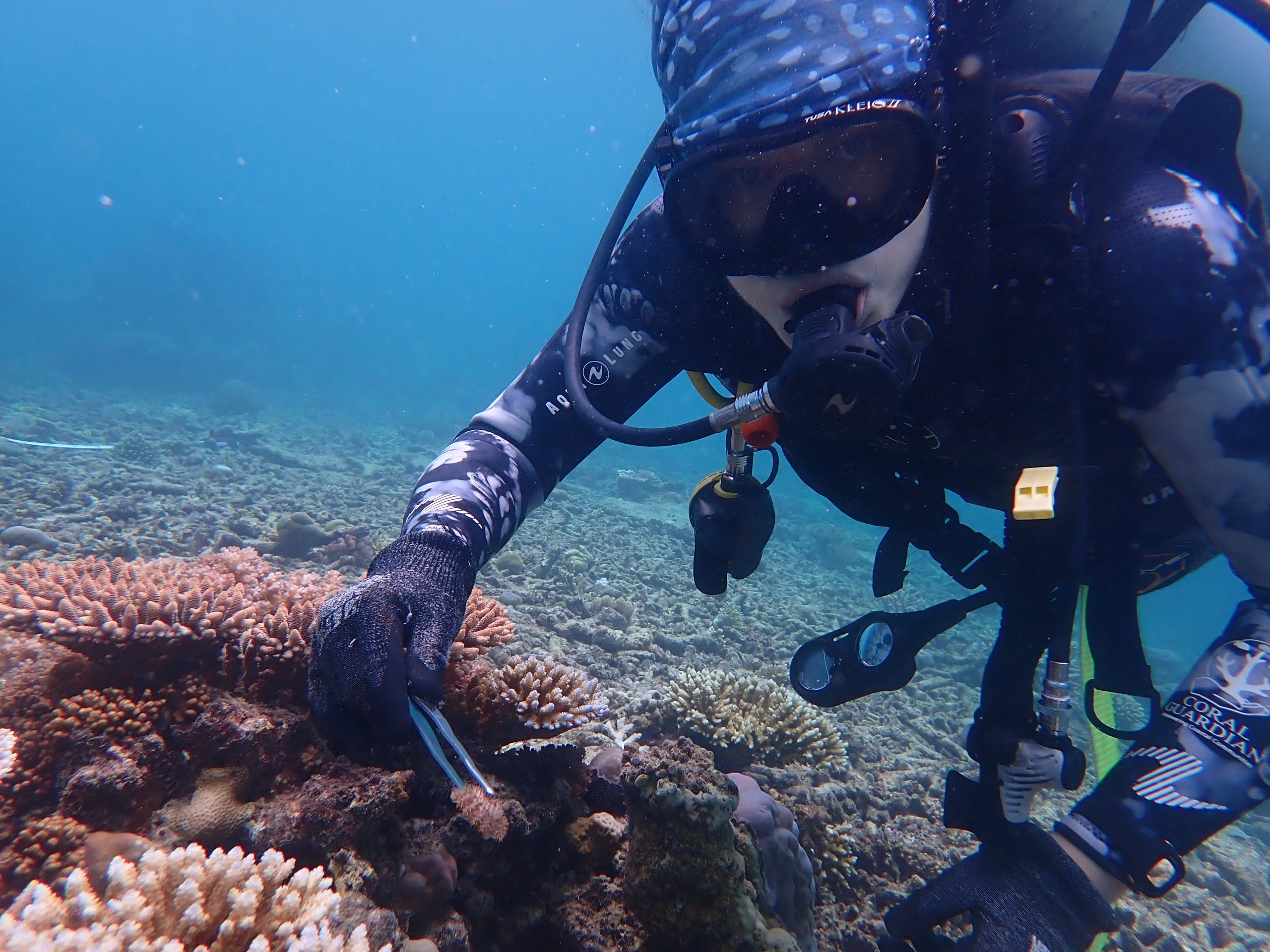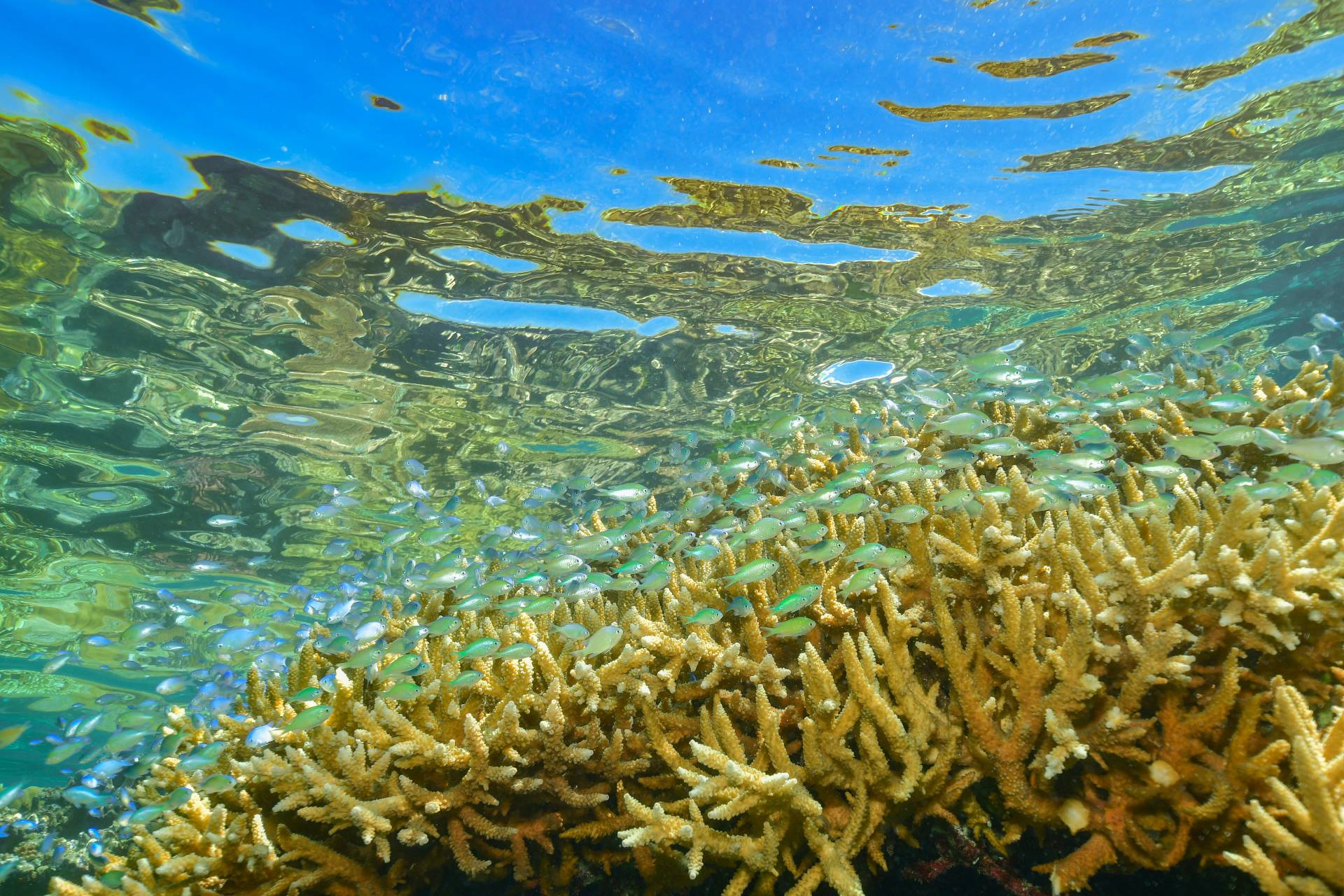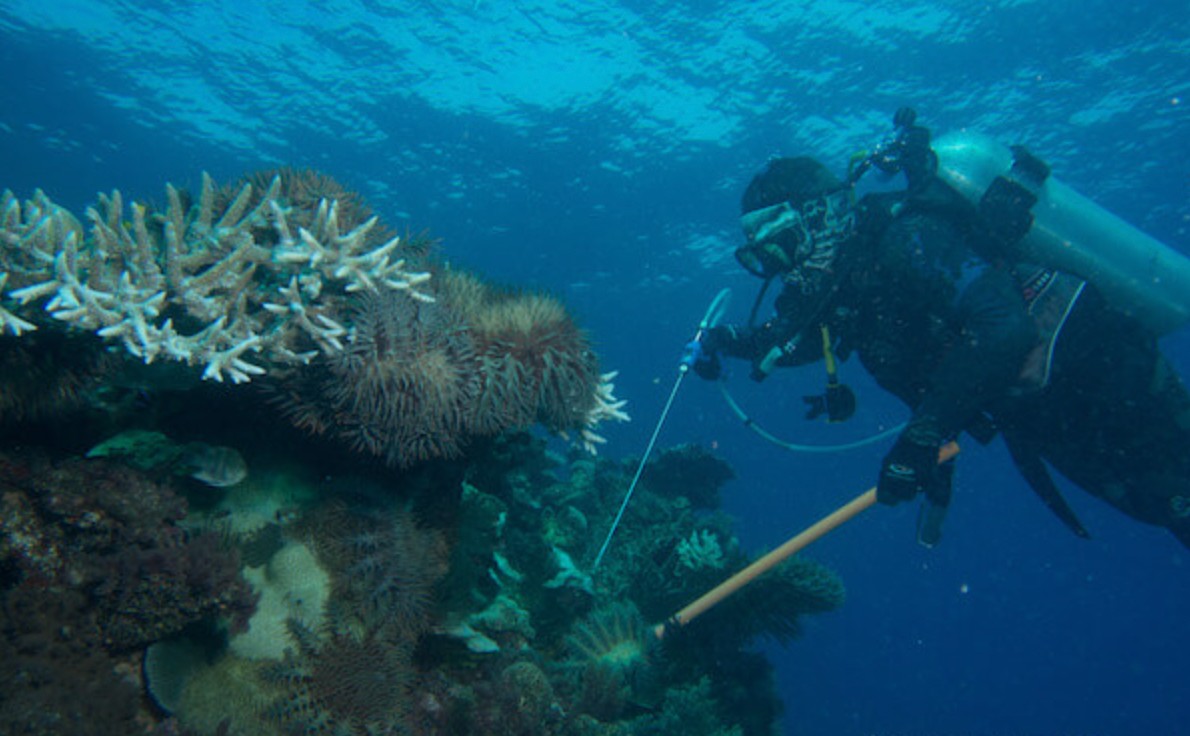
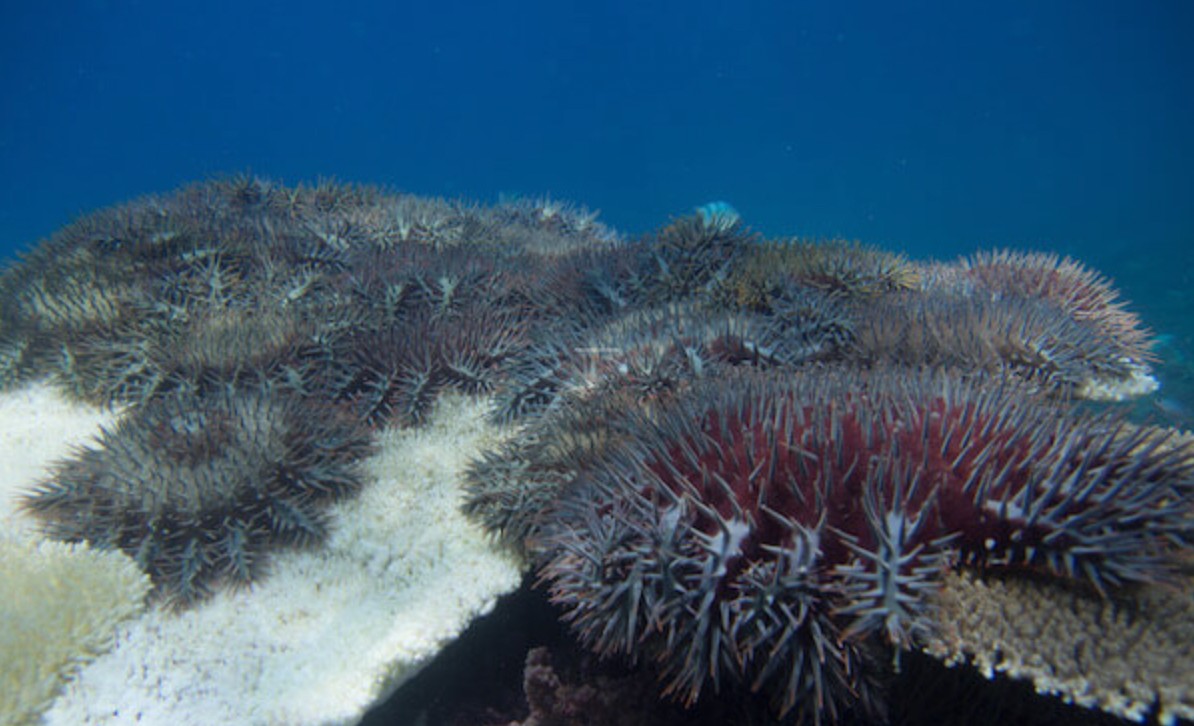
CoTS on hard corals, photo courtesy of Dan Shultz
Background on this Coral Predator
Crown-of-thorns starfish (CoTS) are a natural coral predator within the Great Barrier Reef, but they do occur between the Red Sea and the Eastern Pacific (Not reported in the Caribbean). These animals have a unique mechanism of feeding, where their stomach is pushed out through their mouth and over the live coral surface. Once the coral tissue is digested, their stomach is pulled back through the mouth.
These animals leave a feeding scar which appears bright white from where the coral tissue has been digested. CoTS are voracious feeders and can kill entire colonies of corals, even big ones. They tend to favour preying on fast growing hard corals like the branching, plate or table forms. Other corals such as boulders, brain and softs are not as liked as much. This may be due to the amount of coral tissue available, coral defences or possibly they just don’t like the taste.
These animals have the usual starfish body plan with numerous arms (>20) that radiate from the central disc. CoTS like several other starfish species have the ability to regenerate appendages lost through predation, stress or disease. The body and arms are covered in sharp venomous spines, and they can grow up to almost 80cm in diameter. Cots grow fast and reach sexual maturity about 15cm in diameter, but a large CoTS can potentially produce millions of eggs. Generally separate sexed, with male and females releasing their reproductive material through broadcast spawning. CoTS have high fertilisation success even if males and females are separated by distance. Recent discoveries have shown that CoTS are capable of being hermaphrodites in having both male and female organs and also have the capacity to self-fertilise. Which means one CoTS has the potential to release 100,000’s of fertilised eggs.
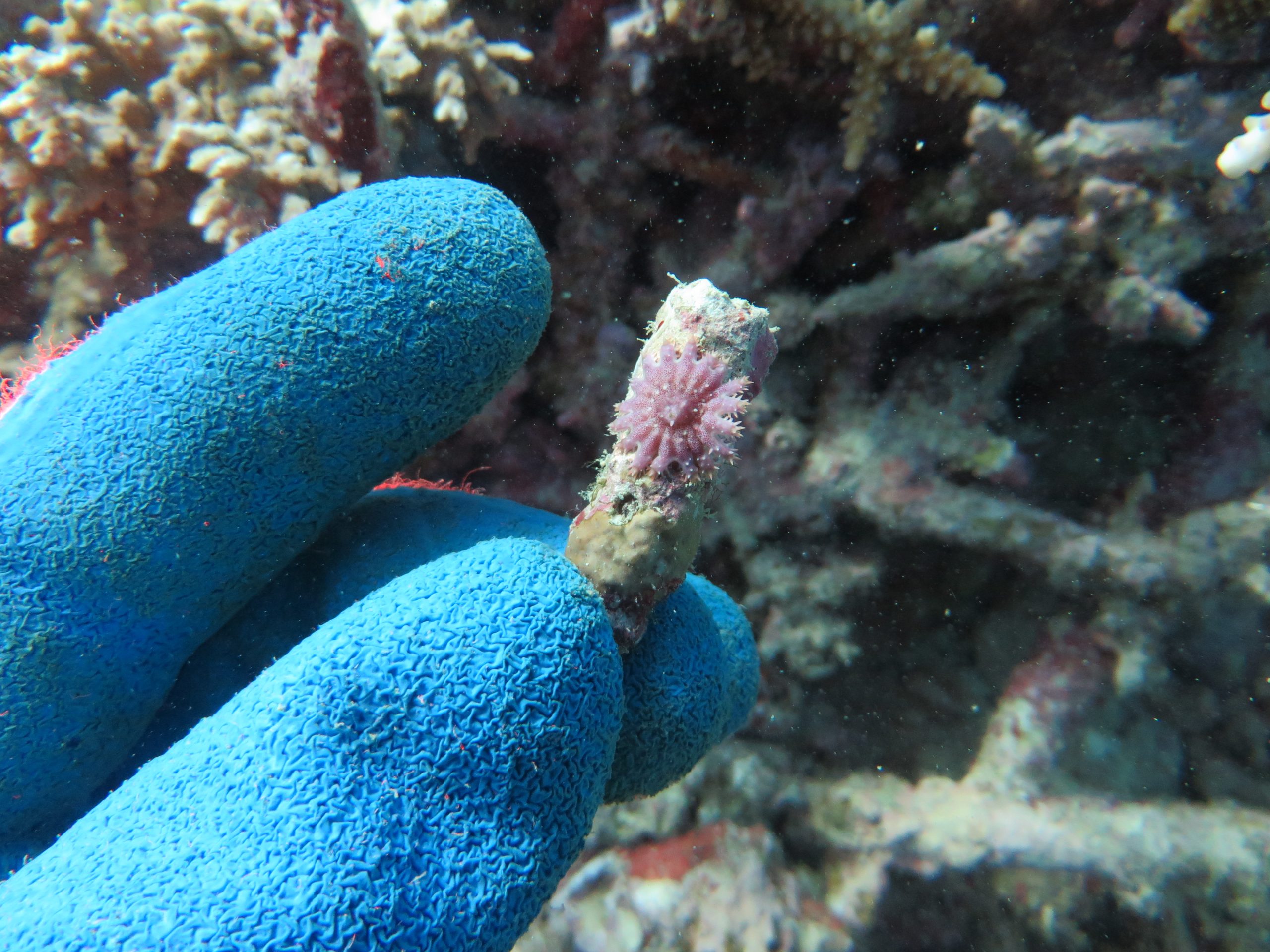
Juvenile CoTS on hard corals
Population Outbreaks
Crown-of-thorns starfish have some interesting biological features, but what they are probably most famous for is their capability to go from a very low density (<1 starfish/hectare) on a reef to extremely high density (>1000 starfish/hectare). When these outbreaks occur on coral reefs, they can have devastating effects, where a high live coral cover reef can be reduced to a very low coral cover reef in a matter of months. When these outbreaks were first witnessed in the 1960’s they were often associated with plague or biblical references.
Although we are uncertain what factors initiate a primary outbreak on a coral reef, the suspected causes are reduced predation pressure, oceanographic features (related to ENSO cycle) and food availability for CoTS larvae. We believe a primary outbreak occurs on coral reefs in the section between Cairns and Lizard Island and is referred to as the initiation box. Then secondary outbreaks spread to neighbouring reefs and generally start heading south. Primary outbreaks occur roughly every 15years, although secondary outbreaks can last for a decade. On the Great Barrier Reef there have been four recognised outbreaks which initiated; 1962, 1979, 1993 and 2009.
Tourism Perspective
From a tourism point of view, high numbers of CoTS are devastating to hard coral populations in a small area such as Reef Tourism site. Tourism operators inside the World Heritage Great Barrier Reef, utilise several methods to increase coral resilience at their sites. Ongoing CoTS control programmes are one initiative operators use to preserve and protect live coral cover. These programmes usually use SCUBA divers to inject CoTS with a corrosive substance. Traditionally these methods were multi-shot and used swimming pool acid (sodium bisulphate), but have recently evolved to single shot methods and using organic substances such as ox bile salts or vinegar. These advances along with the Pest Management strategy have seen CoTS control at an individual reef level become increasingly efficient in recent years. For more information, visit www.gbrmpa.gov.au and www.ampto.org
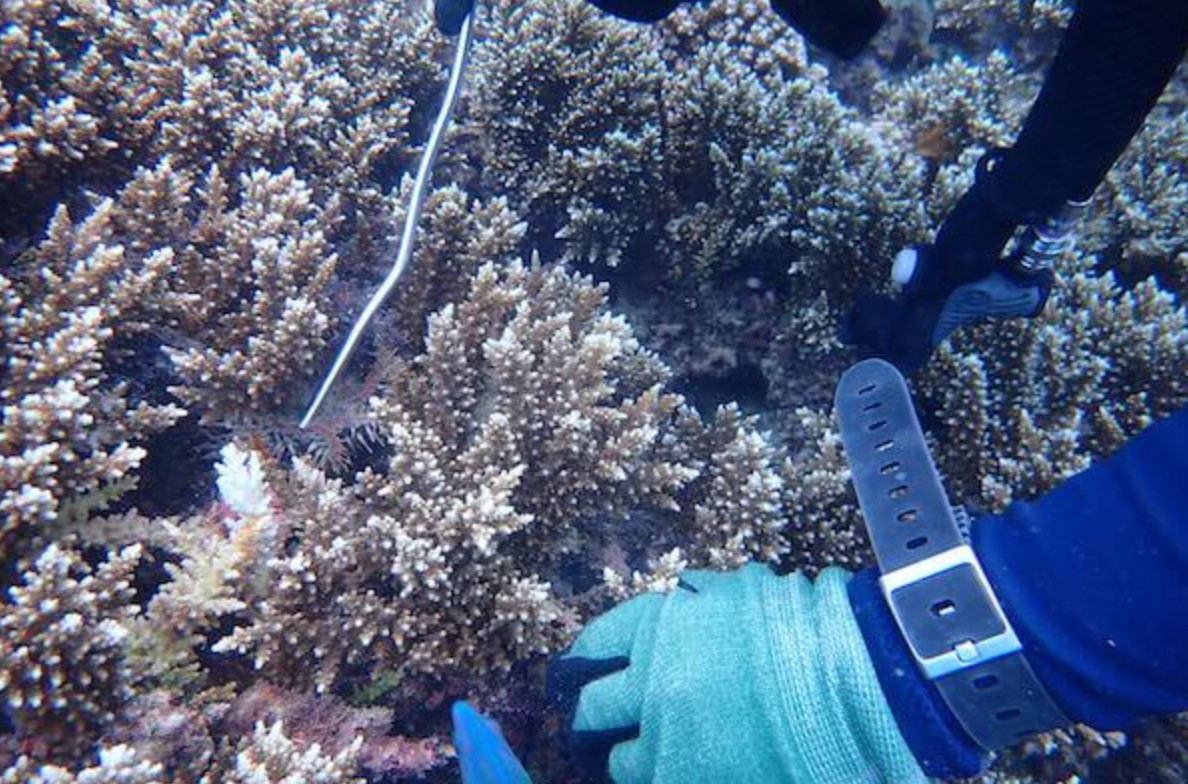
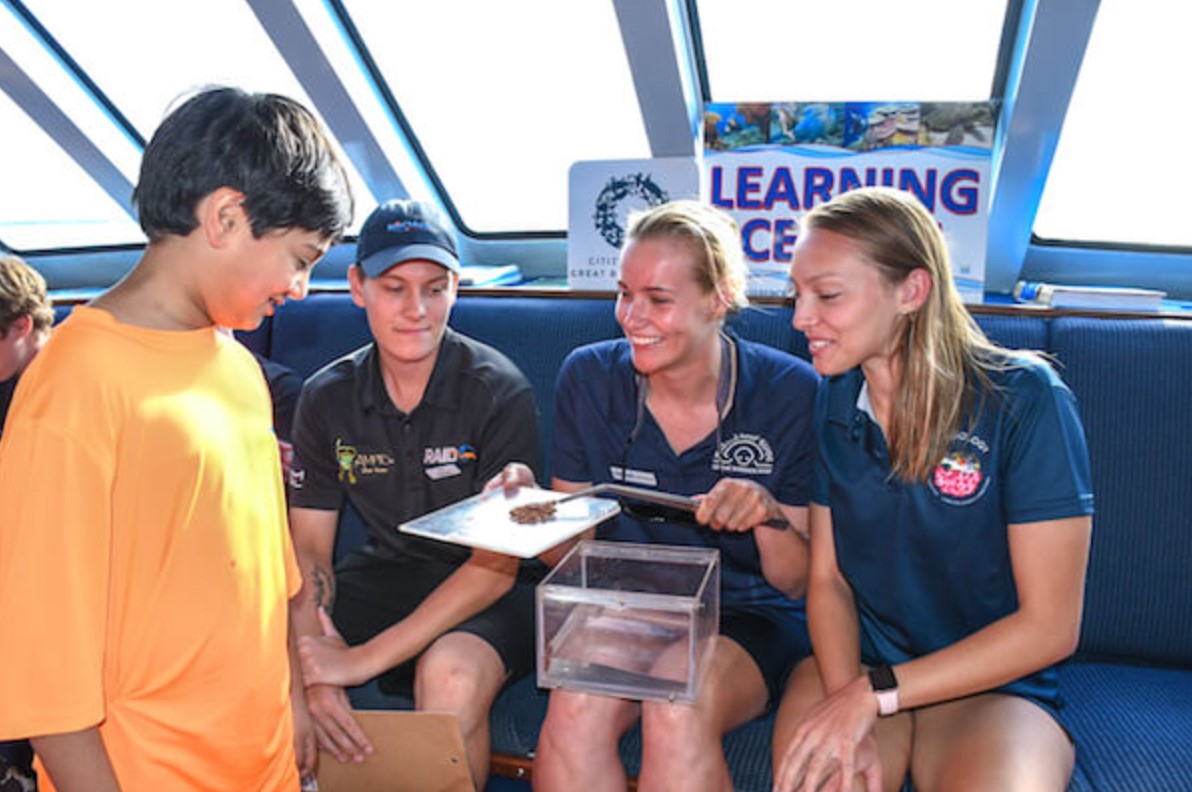
Key Findings and Relevance
Key findings so far:
- From 2014 to present, 11,049 juvenile CoTS between 5 and 150mm in size have been collected.
- Small Cots less than 7cm like to feed on small diameter hard branching coral species.
- Possible two age classes progressing each year
What’s the relevance?
Sampling designs that focus on juvenile CoTS abundance combined with other early detection methods could be incorporated into an early warning system to predict future outbreaks in the initiation region of the Great Barrier Reef. This long term juvenile research programme provides information on juvenile CoTS ecology that may be useful to innovative programmes involved with suppression of future outbreaks.
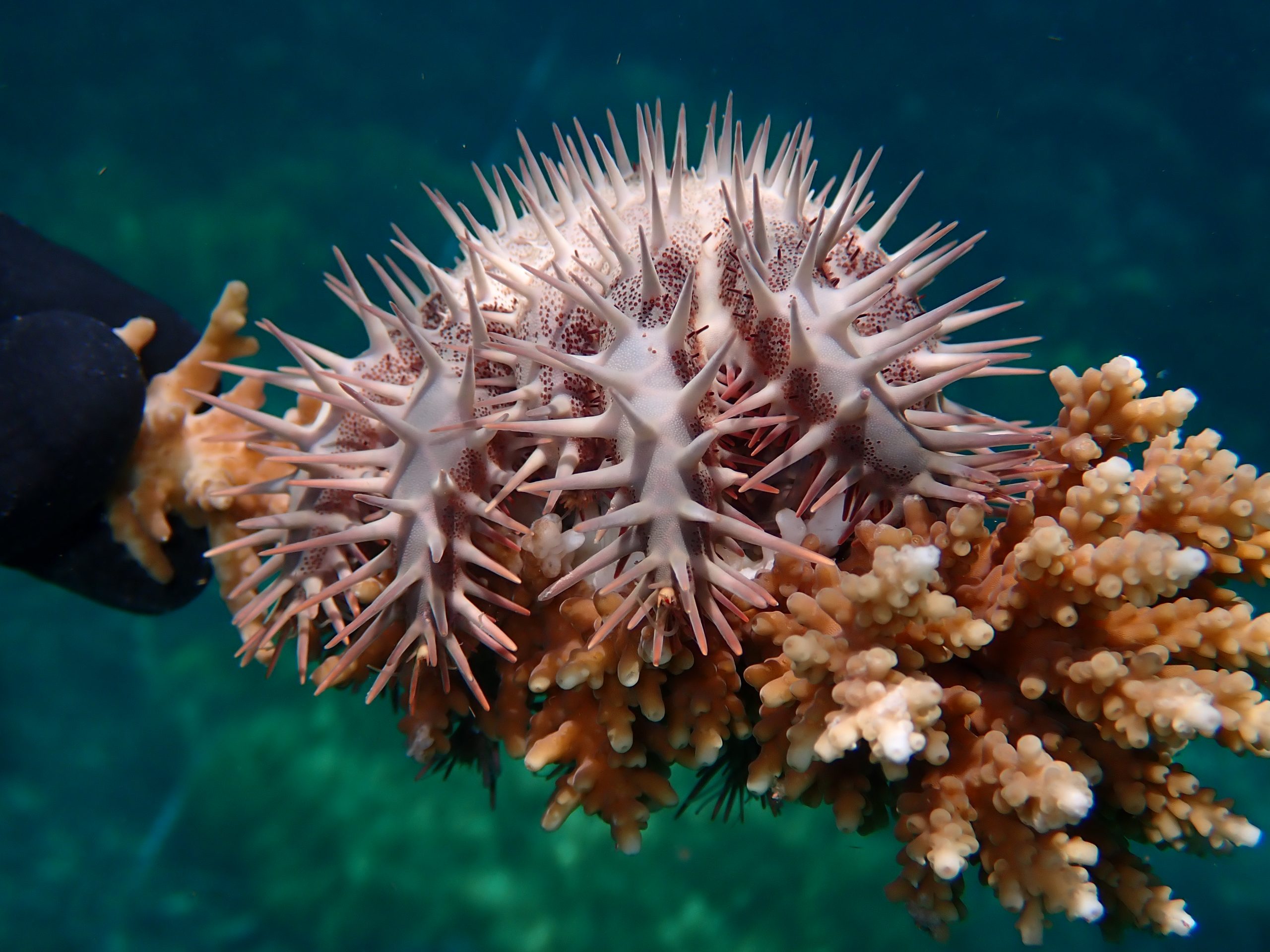
Juvenile CoTS on preferred Bottlebrush coral
